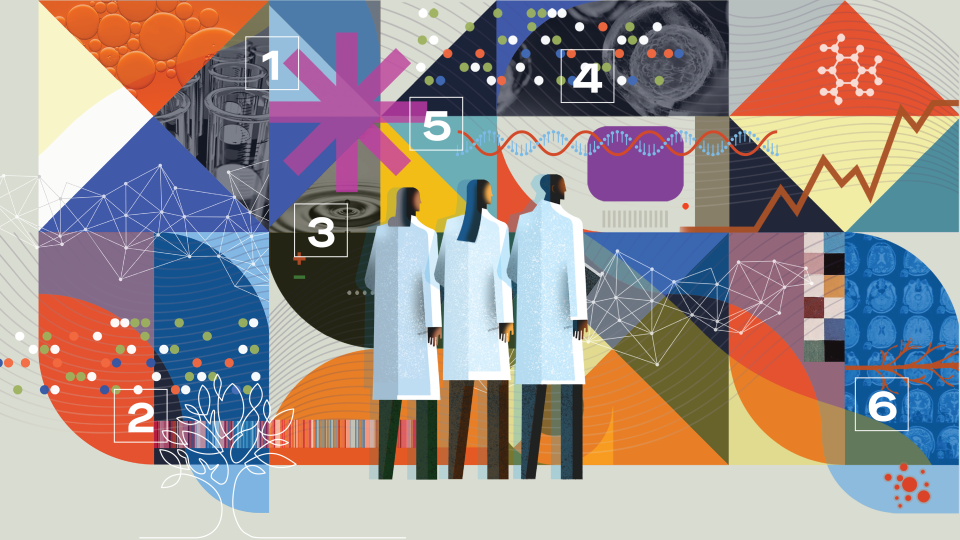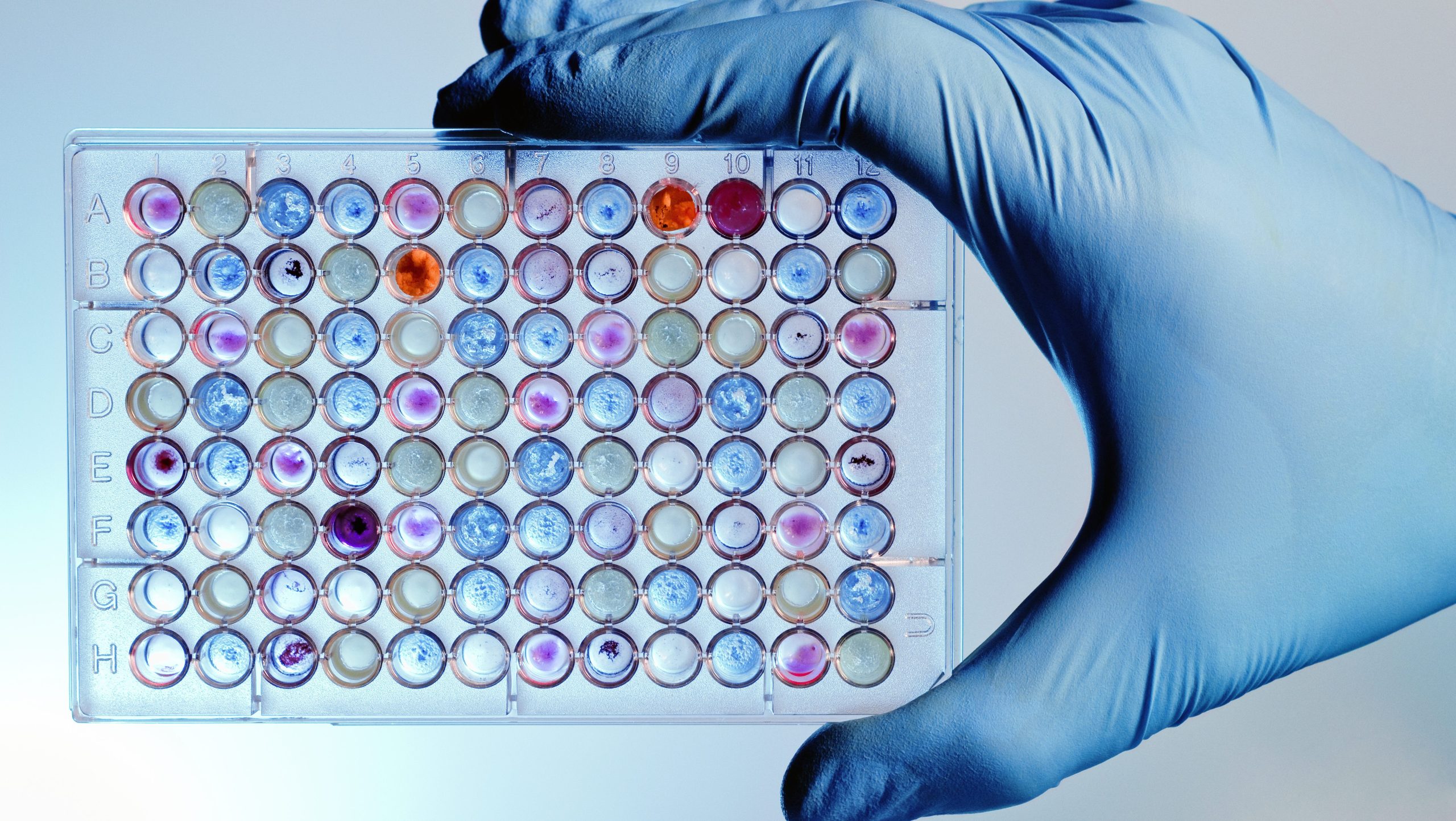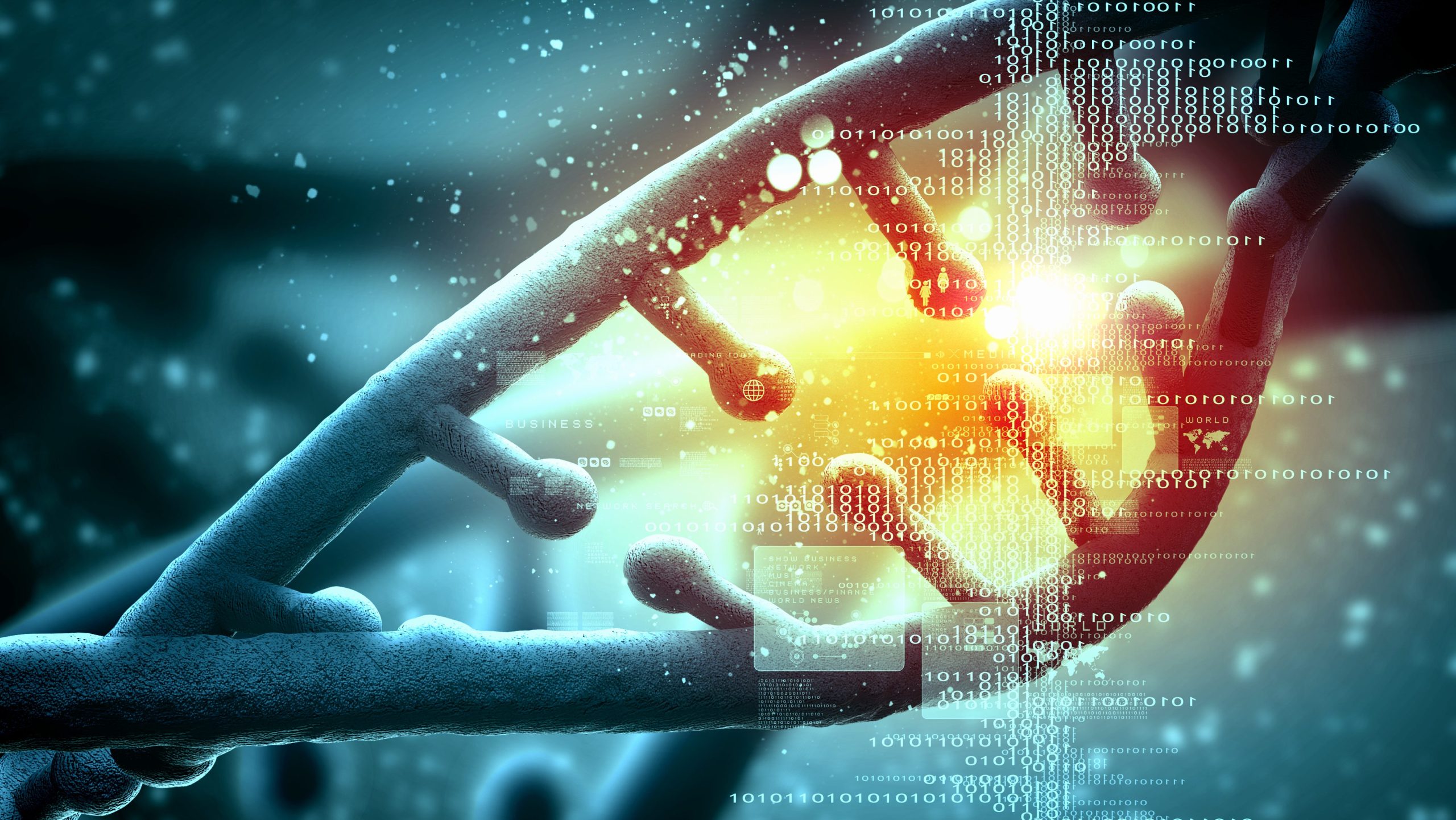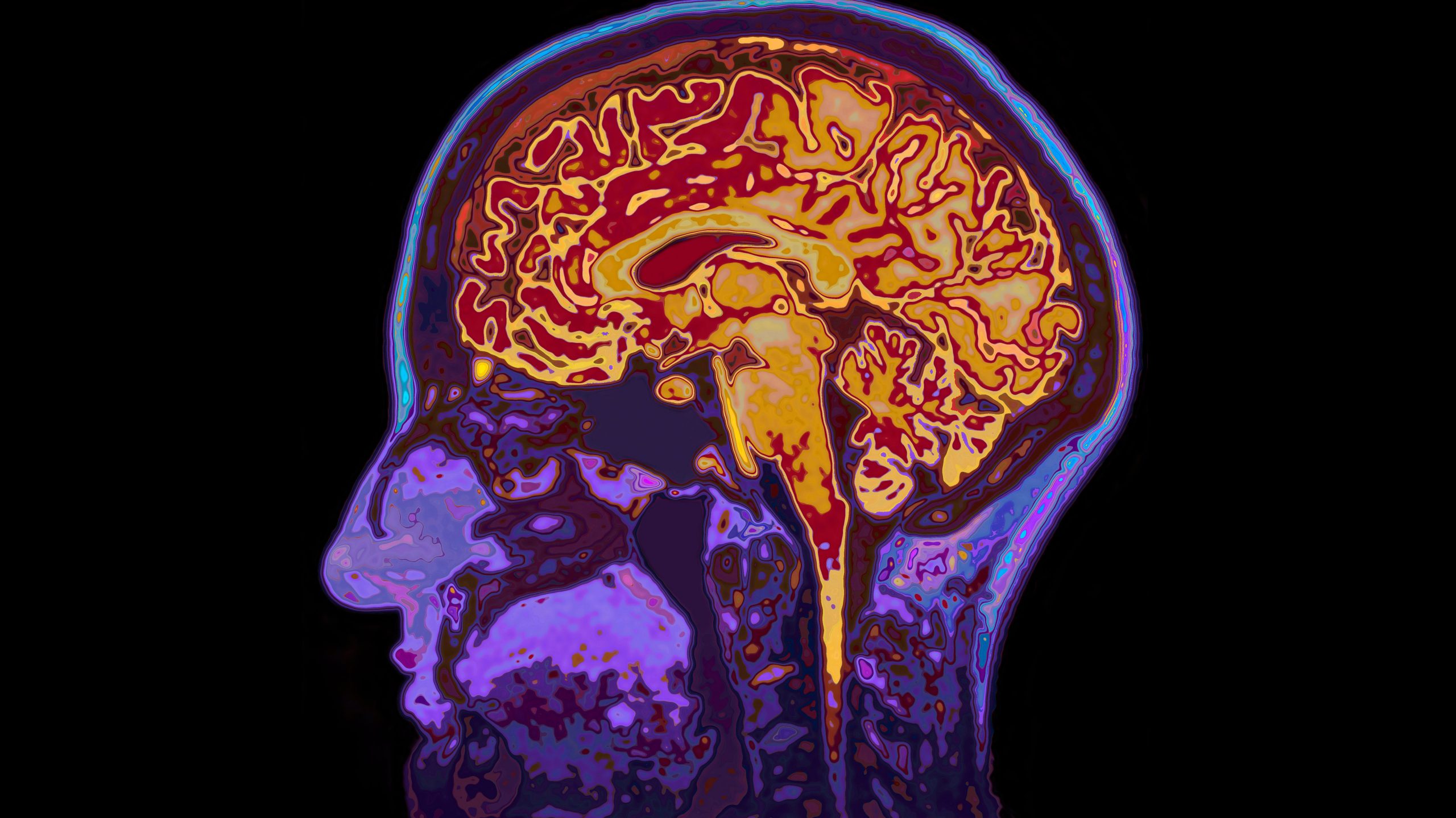
Chemical reactions are responsible for many of our experiences and the way we interact with the natural world. From the vivid color shifts and intriguing aromas we consciously perceive to the continuous changes occurring behind the scenes in our bodies every day, chemistry is the ultimate architect.
Although it’s easy to take many of its end products for granted, study of the chemical sciences has facilitated countless practical applications that support a healthy, functioning society. The fields of chemistry have shaped industries ranging from pharmaceuticals, biology, metallurgy, plastics and digital electronics, providing us with the biomedical supplies, medicines and consumer products we rely on daily.
Scripps Research is home to many of the scientific pioneers and cutting-edge technologies that have transformed academic ideas into the life-changing objects and processes we now depend on.

1) Shaping Drug Discovery
With the prevalence of chronic ailments ranging from cancer to heart disease, scientists are always searching for the next blockbuster drug. Novel chemistry tools enable researchers to discover and develop molecules in ways that were not previously possible. Medicines are being invented or reimagined with unprecedented speed and reliability thanks to streamlined routes of synthesis that sidestep prior bottlenecks in industrial pharmaceutical development.
In one example, scientists have chemically engineered antibodies to recognize and inactivate synthetic opioids to help overcome addiction. And in the field of infectious disease, alternative systems of programmable chemical synthesis with machine-learning tools have empowered labs to invent broadly protective vaccines and antiviral medicines for influenza, HIV and the latest variants of SARS-CoV-2. Original research that successfully stabilizes cellular proteins has now been translated into viable therapeutic molecules for progressive heart disease and Alzheimer’s. Additionally, landmark strategies that can rearrange the atomic blueprint of chemical compounds have allowed researchers to modify existing drugs for high blood pressure, cancer and inflammatory disorders, improving both their safety and potency.

2) Sustaining Food and Fuel
Discoveries in chemistry have been responsible for some of the most important solutions to the energy demands and food requirements of modern civilization.
In terms of energy, reactions that convert chemical changes into electrical potential have resulted in hydrogen fuel cells, which supply power for space capsules and satellites, as well as cars and marine vessels. In collaboration with physicists and engineers, chemists also play an essential role in harnessing nuclear energy, a low-carbon source of electricity. To combat climate change, chemists have also driven forward the engineering of batteries, allowing the increase of electric vehicles and improvements in solar energy conversion and storage.
Chemists are also helping to address pending global challenges, such as food security. Ensuring we can feed a global population, breakthroughs in the chemical sciences have led to new herbicides and pesticides that improve crop yields and protect against disease. Many of these have been inspired by nature, having been first extracted from plants or other organisms and then scaled up to industrial quantities using sophisticated schemes of synthesis. Biochemists also study soil environment and the complex interactions between the different inhabitant species. This combined research helps foster holistic agricultural practices by preventing and reversing soil desertification and supporting intelligent land use long into the future, and in the face of more extreme climate conditions.

3) Going Green
Scientists have developed both cleaner chemical reactions for industrial production as well as innovative technologies for managing the devastating effects of climate change.
Systems like “click chemistry,” which allows modular chemicals to snap together like LEGO® bricks, have been able to generate new families of valuable materials in an environmentally safe way, without many of the dangerous solvents and polluting byproducts of earlier methods. Groundbreaking ways of manipulating ubiquitous carbon-hydrogen bonds have enabled chemists to use recoverable, nonprecious metals in their experiments, reducing toxic waste and decreasing the carbon footprint of metal extraction.
In addition, advances in electrochemistry have been successfully implemented for the detection and elimination of heavy metals, hazardous gases and other environmental contaminants. This has complemented analytical chemistry methods that can rapidly test water and air quality, promoting sustainable water purification systems and ways of curtailing atmospheric pollutants such as sulfur dioxide, carbon monoxide and particulates.

4) Seeking to Repair, Regrow and Replace
Our bodies have a limited ability to repair organs and tissues, which can lead to debilitating conditions like heart failure and Parkinson’s disease. Chemical biology advances are revealing the molecular machinery that gives structural support to cells—
a network that breaks down during chronic wounds caused by diabetes or long-term infection. Leading technologies have led to the discovery of small molecules that can safely and selectively regenerate layers of skin tissue to enable wound closure. These new compounds are now being formulated into medicines that can be applied topically to heal ulcers and avoid limb amputation.
Beyond the surface, medicinal chemists are also developing ways of replacing damaged internal organ systems. For example, unraveling the cellular pathways that control organ size and growth, researchers are designing treatments that can restore cardiac cells in the case of heart failure and remodel scarred lung tissue in pulmonary fibrosis. In parallel, vast chemical screens have pinpointed agents which untap the regenerative abilities of our body’s own residing stem cells. Some are directed at accelerating growth in the lower airways to improve respiratory care, while others, currently in clinical trials, trigger the self-renewal of joint cartilage to reverse osteoarthritis.
Alternatively, breakthroughs in chemical genetics in other fields are offering the scientific insights to answer one of the most fundamental questions in biology: how life first originated on Earth.

5) Expanding Life’s Blueprint
The limitless potential of chemistry has now extended to what many had previously considered science fiction—the ability to rewrite the genetic code and create synthetic life. Using precise, structure-based design tools, chemists have established a way of reprogramming amino acids, the essential building blocks of all organisms. The successful incorporation of these new elementary units into mammalian cells has given way to modified cultures of neurons, immune cells and regenerative stem cells.
The unique properties that result from this modified genetic template now hold great promise for gene therapy approaches and tissue replacement procedures. These synthetic systems also provide a framework for reconstructing natural biological pathways, revealing how certain disease states emerge. When disease does occur, synthetic circuits may offer more sophisticated control over drug release in the body, improving therapeutic delivery and minimizing side effects.
Alternatively, breakthroughs in chemical genetics in other fields are offering the scientific insights to answer one of the most fundamental questions in biology: how life first originated on Earth.

6) Picturing Health
The ability to accurately visualize complex biological systems allows scientists to uncover potential problems and find the best course of action. For example, healthcare practitioners have many non-invasive ways to obtain in-depth, visual insights about the human body to help diagnose, monitor or treat medical conditions—all thanks to innovations in chemistry.
The invention of magnetic resonance imaging (MRI), which can help to diagnose stroke and multiple sclerosis or uncover the presence of tumors, stemmed from examinations in chemical structures. This led to the introduction of functional MRI (fMRI), which provides detailed brain mapping and has advanced an understanding of neurobehavioral disorders. The addition of new chemical compounds into radioactive tracers is also transforming imaging technologies like positron emission tomography (PET) scans, which are used to evaluate the biochemical function inside a tissue. These have become essential tools for identifying aggressive cancers or revealing evidence of heart disease.
The study of chemistry is also leading to more accurate blood tests and biopsy analysis: by resolving molecule-to-molecule interactions, scientists are inventing next-generation chemical probes that can detect specific biomarkers and offer early-warning signs of neurodegenerative disease. Finally, chemists are also helping to design affordable genome sequencing devices. This technology is paving the way for personalized medicine by revealing an individual’s genetic predisposition toward a particular disease.